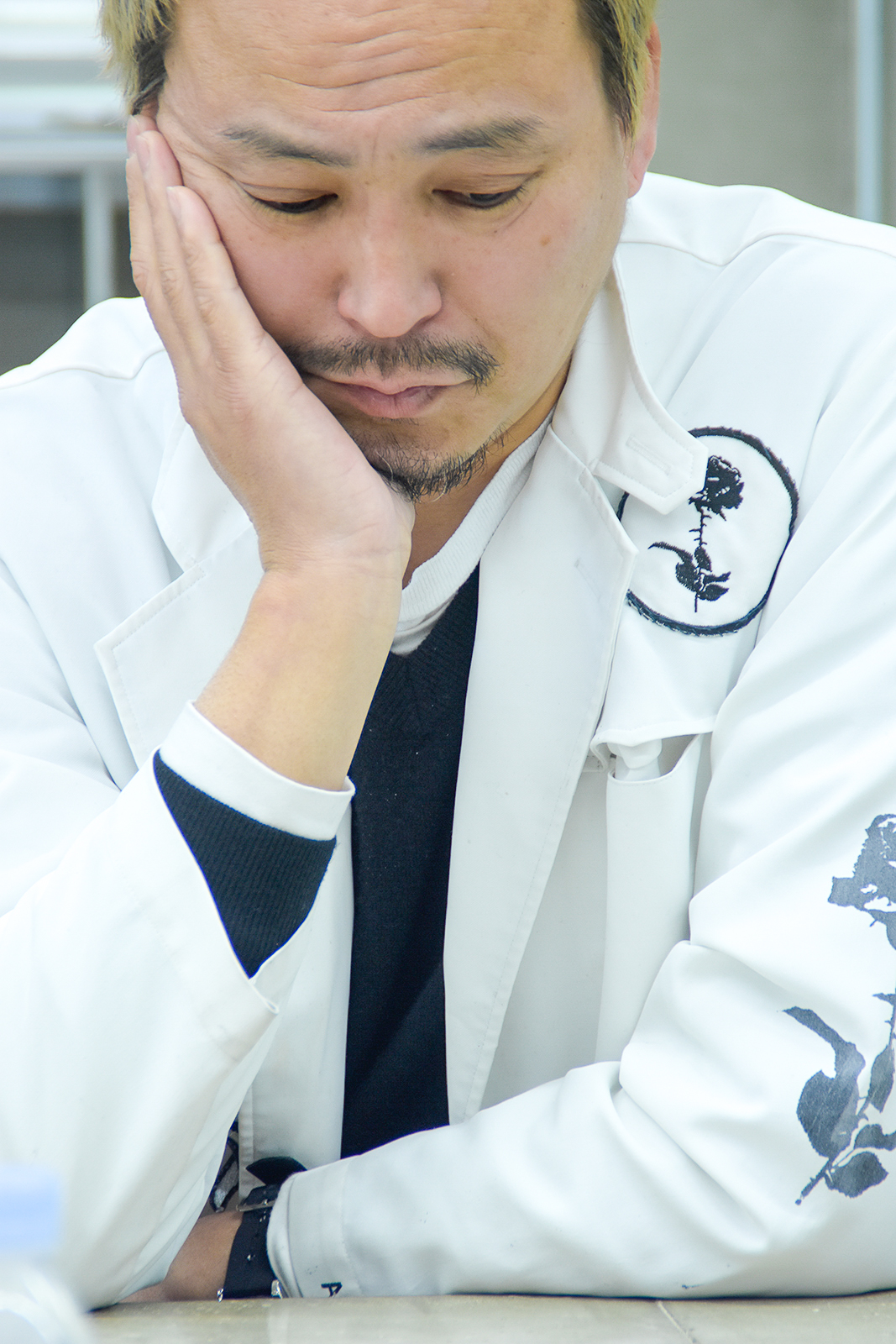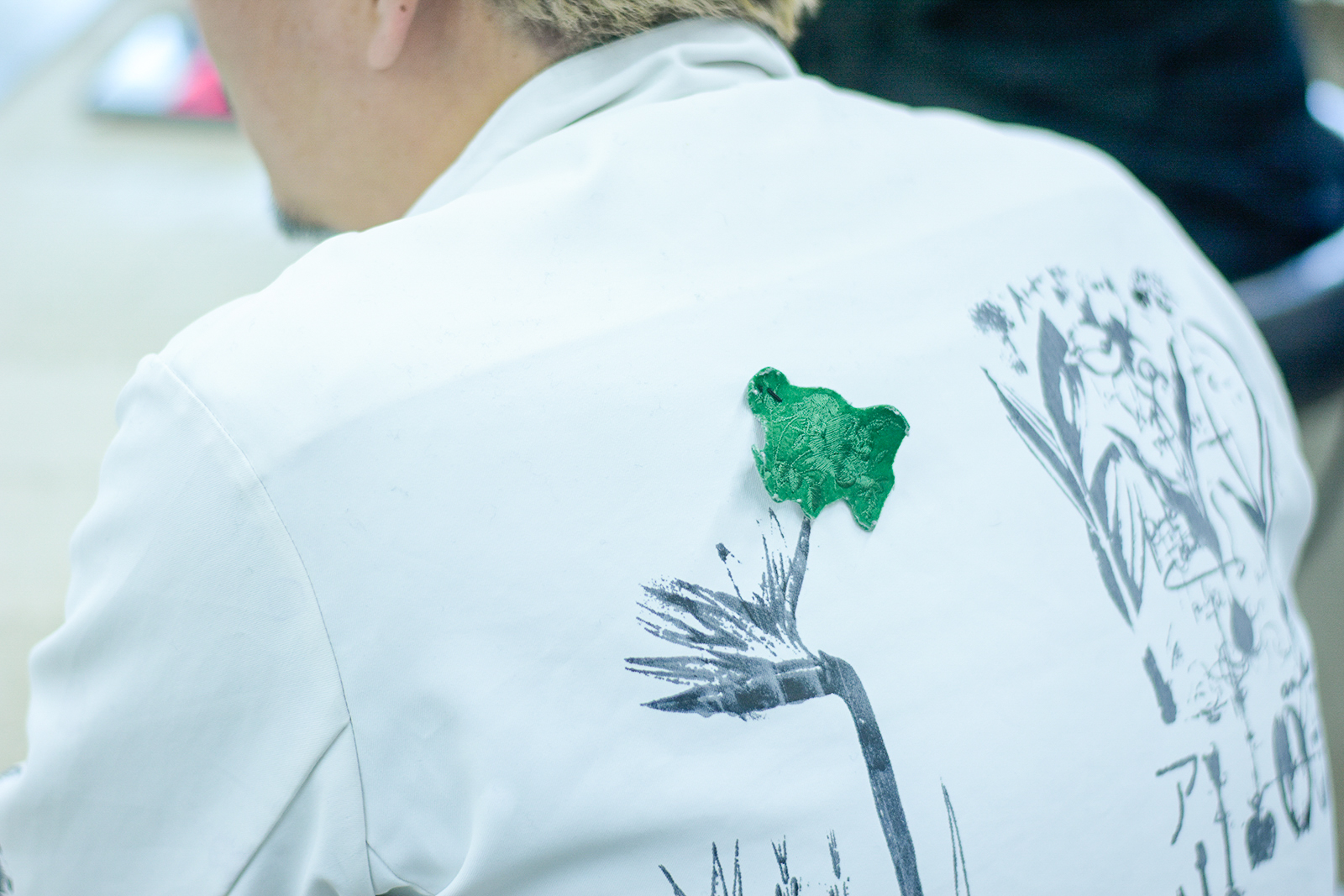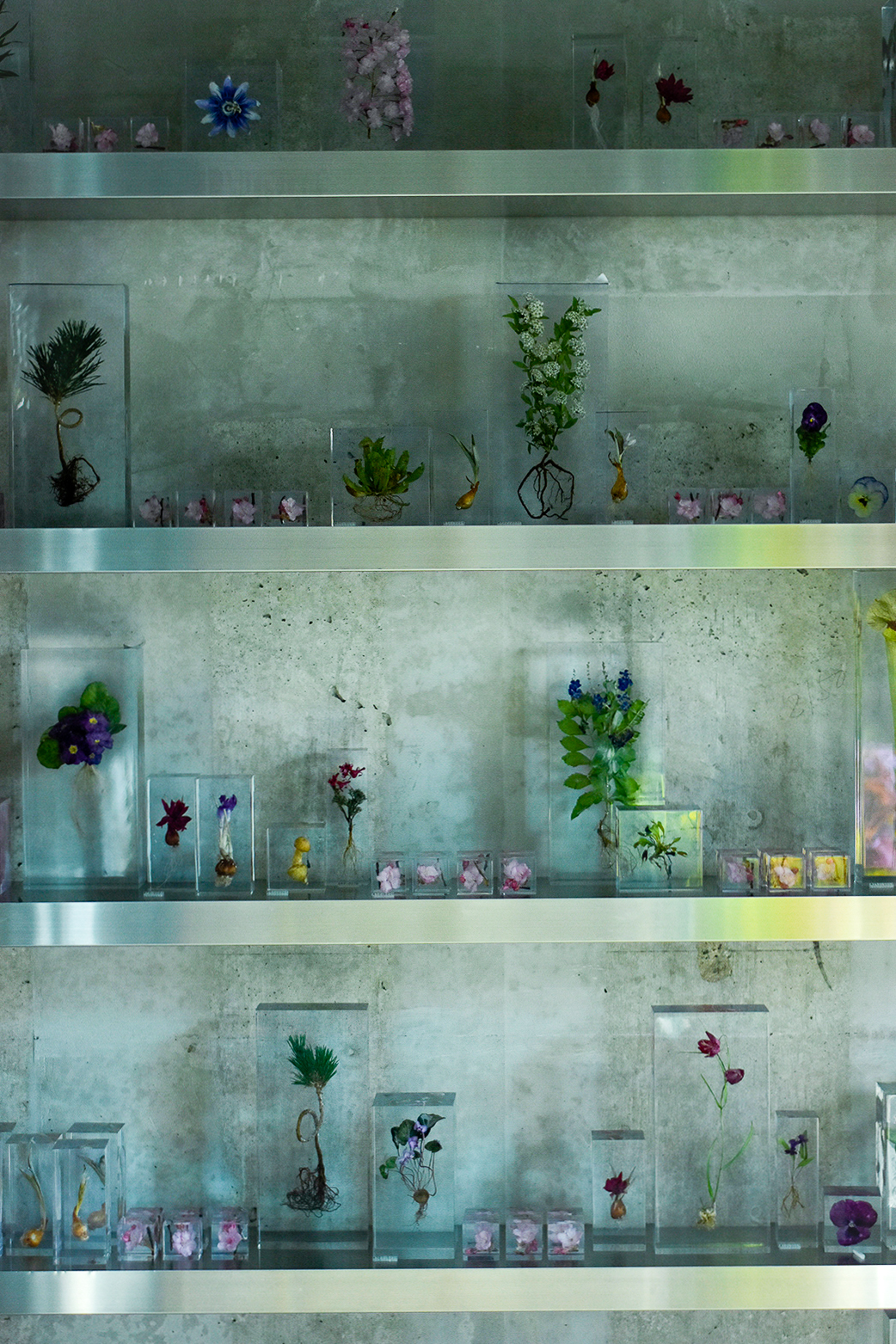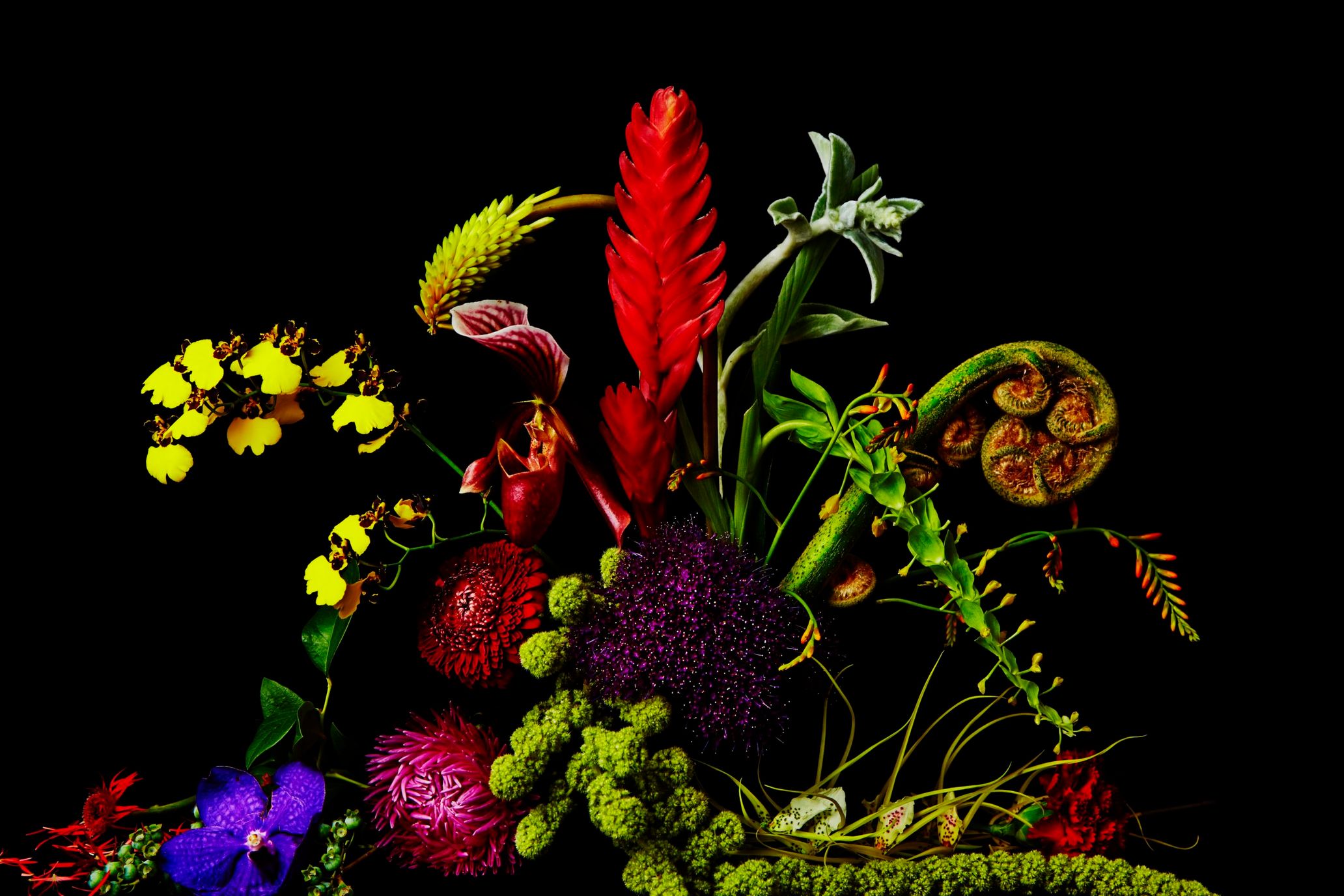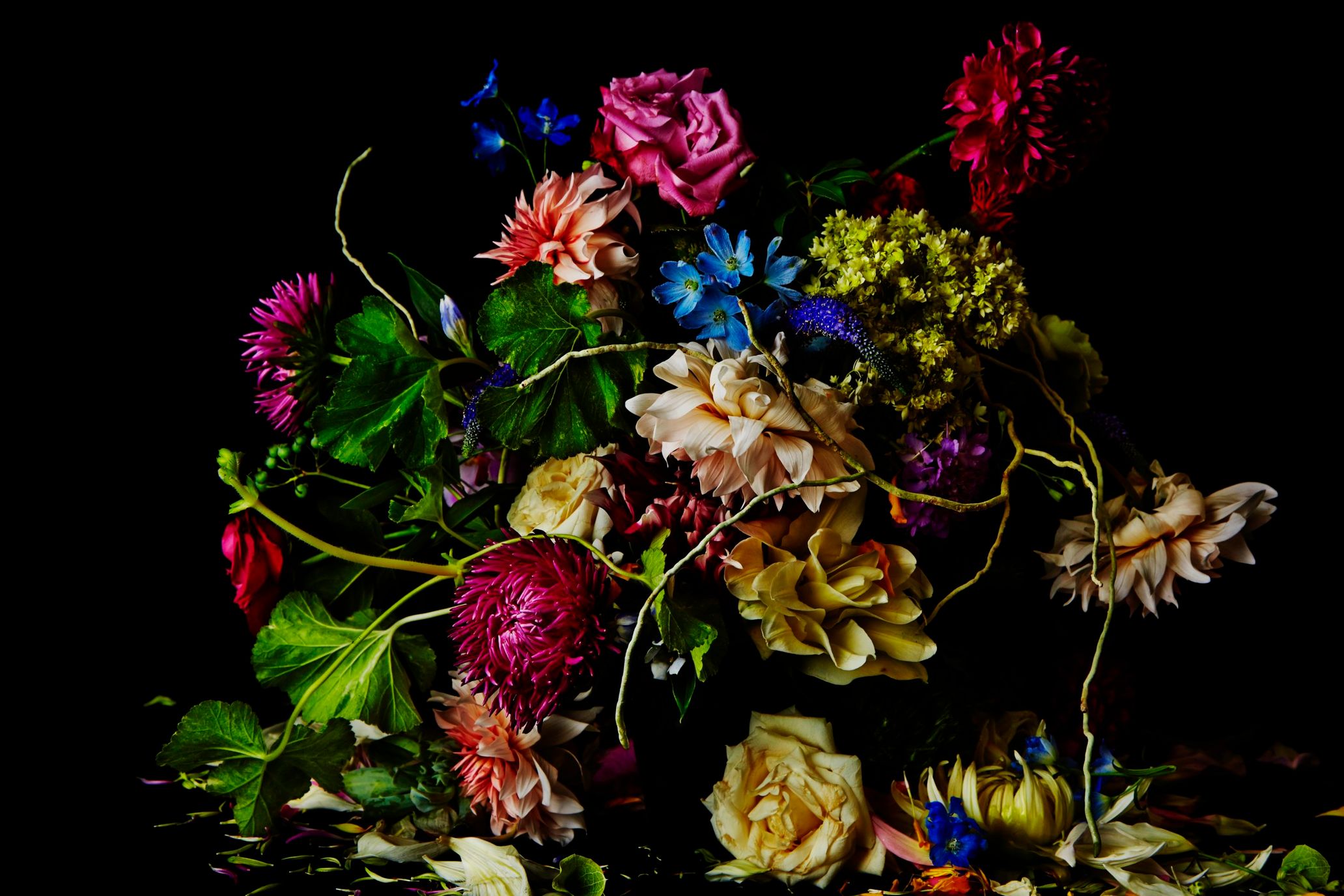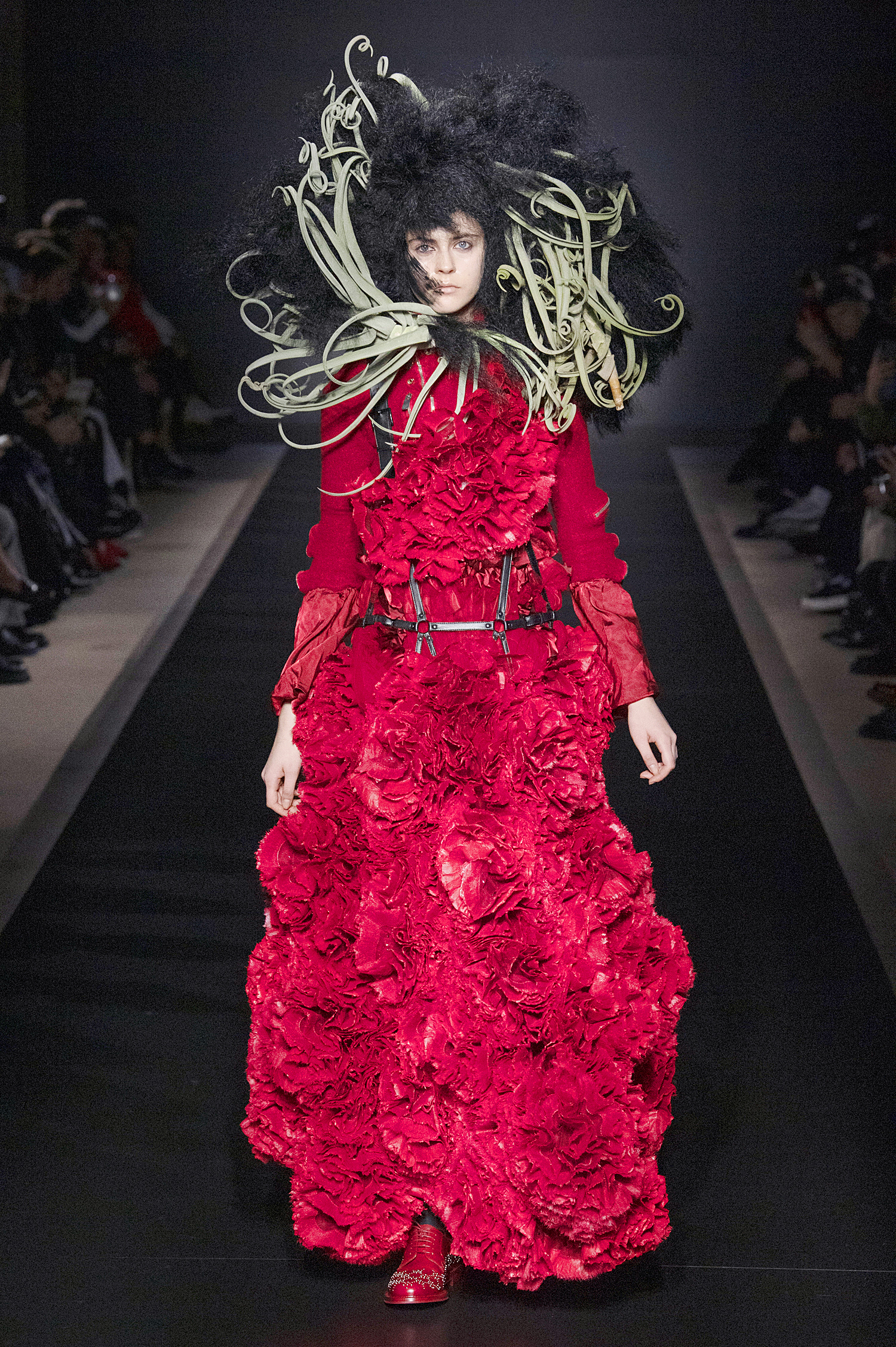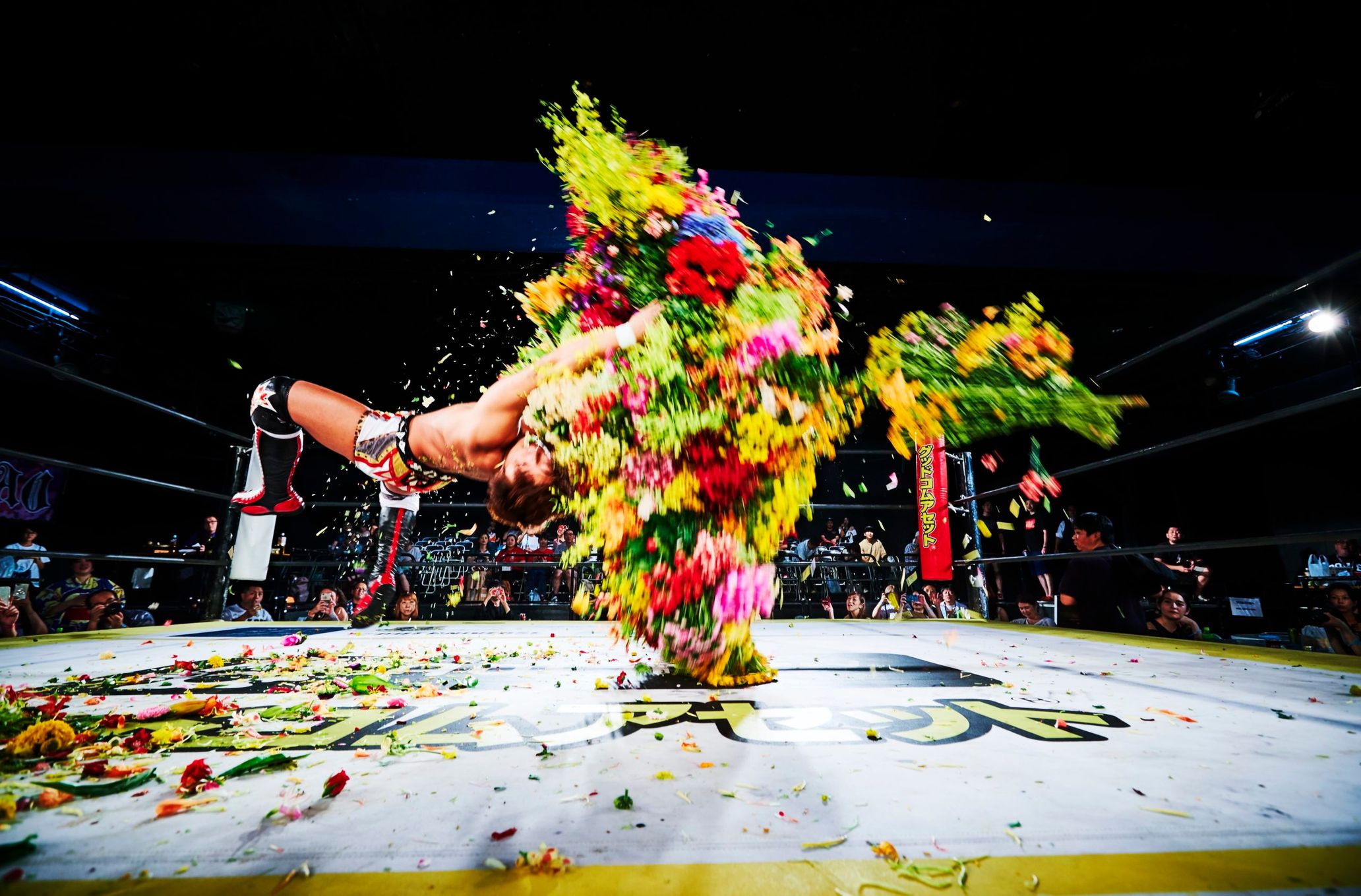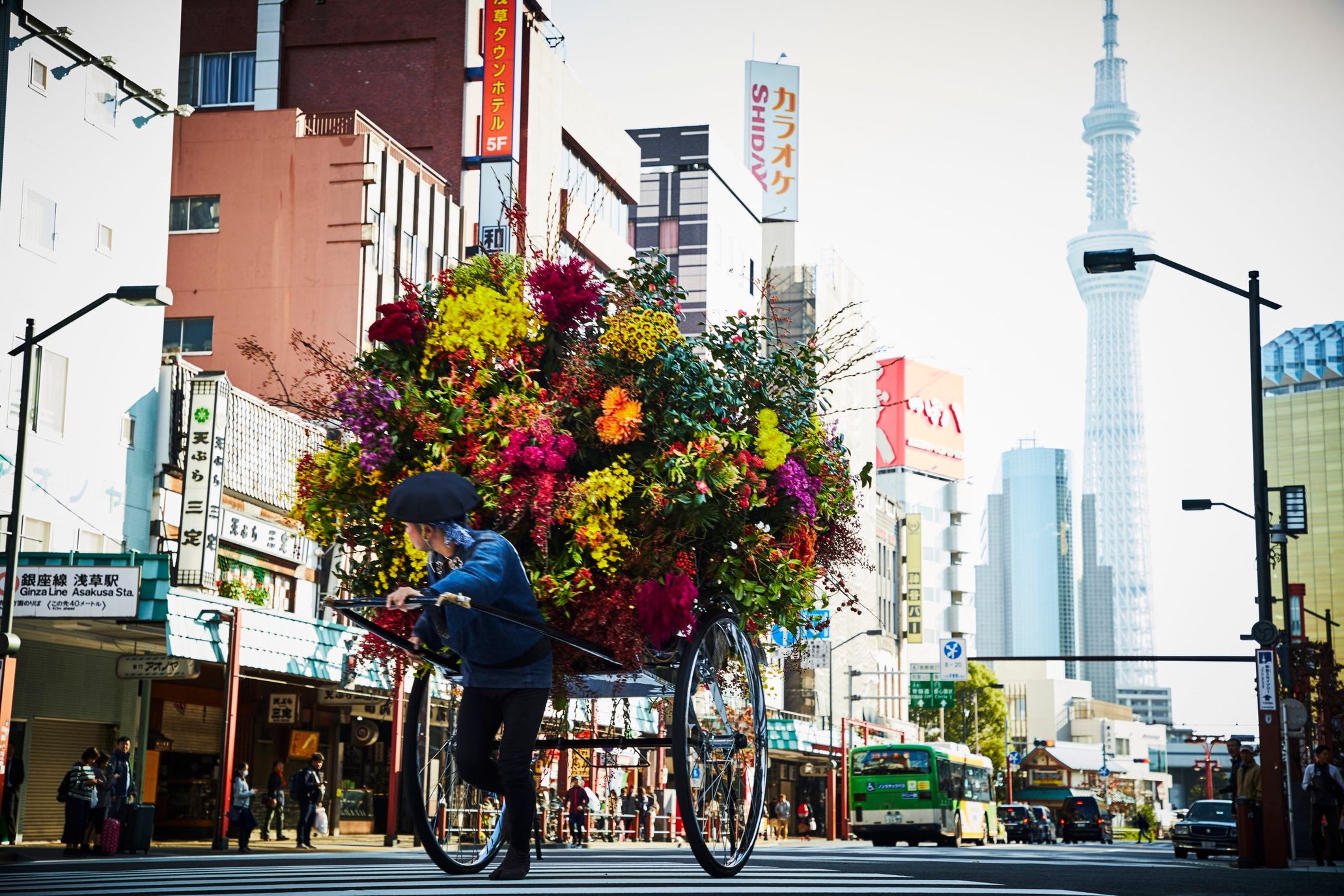Founded in 2009, AMKK (“Azuma Makoto, Kaju Kenkyujo”) is a group of floral and botanical creators centered around flower artist, Makoto Azuma and botanical photographer, Shunsuke Shiinoki. On top of operating “JARDINS des FLEURS,” a custom-made bouquet shop in Minami Aoyama, Tokyo, they create experimental pieces such as shooting a bouquet into outer space, submerging flowers underwater with a diver, and photographing a pro wrestler doing a backdrop move with an immense bouquet. They also provide works to both domestic and international fashion brands. Further, AMKK looks at the life and death of flowers head-on. Surface-level beauty isn’t the only thing they explore; they valorize flowers by depicting the mystique and vitality flowers possess.
In a lot of different aspects, people use flowers as a means to express emotions such as joy and grief. Many people visited JARDINS des FLEURS after the Great East Japan Earthquake as well as the beginning of the COVID-19 pandemic. Azuma explains, “People entrust their feelings in flowers when they can’t find the words to express them during difficult times. We portray that feeling in our work. The magic of flowers can be seen in how flowers speak for the person sending them.” AMKK creates artwork actively but their main focus is on creating custom-made bouquets for customers. “The way we make bouquets differ according to whether we decide to express the feelings of the sender or the recipient. Usually, I ask about the recipient’s occupation, personality, and preferences. Then, I begin to picture the bouquet in my head. It could be long or soft and round. It could also be strong and erotic.” After that, he has multiple meetings with the flower buyer about the types of flowers and shapes, with the season in mind as well. Because the bouquet shapes change depending on what sort of flowers arrive, there’s no right or wrong in regards to the completed product. It’s a repetition of figuring out what works. In order to meet the customer’s wants, there are times where they would pick wild flowers in the mountains instead of using flowers sold at marketplaces. Azuma says that he still has a lot to learn about flowers, regardless of the experiences he’s had. “The other day, Ryuichi Sakamoto told me that he didn’t like the combination of green and pink tones. It’s our job to listen carefully to the customer and get to know them well. We’re still students learning about the trade.”
Flowers as the Embodiment of Life
There are a number of pieces that explore the concept of death in AMKK’s roster. Take, for instance, works that use the contrast between vivid colors and dark backgrounds. “Flowers are the embodiment of life. Our challenge is to make the viewer feel ‘life’ from our work. In other words, how could we make them feel ‘death’ from our work? In human years, cut flowers age 10 years per day and it’s said that their life span is about a week. Today, due to the technology of agriculture, the life span has extended to about 10 days.” Usually, the flowers that are popular at regular flower shops are in their 20s to 30s, in human years. However, at AMKK, they explore the beauty that each flower has, regardless of its age. If it’s for a present, they prepare flowers that are at the height of their blooming beauty. For personal use, they prepare young flowers that’ll last long. The appearance and condition change according to what the flowers are going to be used for. It’s essential to control the way flowers bloom in order to illustrate the embodiment of life via flowers. This is part of the reason why they pay great attention to custom-made bouquets.
For a flower, to die is to wilt. Upon creating bouquets, Azuma thinks about how to make the flowers look pretty even after they die. He says, “I’m testing out how different flowers wilt. For example, tulips from Niigata wilt differently from say, Toyama or overseas. How much water is needed for certain flowers? How long does it take for them to die? Do the petals open up right before they wilt, or do they die without blooming? I record this and use this knowledge for my work.” A new kind of beauty is breathed into the flowers through this experimentation and recording. “By creating flower pieces with the understanding that they’re going to wilt eventually, we’re then able to express themes of life and death in a raw way. When we started the flower shop, a lot of the other shops only had pretty flowers lined up. But I felt like the way flowers decay had this ephemeral beauty to them.”
Pursuing the Diverse Beauty of Flowers Through Creating Art Projects with Other Industries
AMKK has always had ties with various fashion brands. Since the 2018-2019 Fall/Winter season, they’ve been creating head pieces made with live flowers and cacti for Noir Kei Ninomiya’s collections. In 2014, playing with the concept of a garden, they worked on the walls in the “flower” zone of the “Dries Van Noten: Inspirations” exhibition in Musee des Arts Decoratifs in Paris, France. They then became involved with using space as a part of their performance during Spring/Summer 2017 (Women’s). They displayed a bright piece of art on the runway called “ICED FLOWERS” where flowers were submerged in ice. A picture from that show was used as the cover of two volumes of “Dries Van Noten 51-100,” a compilation book of 100 Dries Van Noten Men’s and Women’s shows. “Fashion and flowers go well together, don’t they? It’s always exciting to see how designers interpret flowers. When flowers are used in fashion, they can be looked at in a new, different light.”
In their 2019 art project, “Flower & Man,” in accordance to the title, AMKK took photographs of pro wrestler Konosuke Takeshita doing a backdrop with a flower bouquet. There are also videos where a rickshaw is carrying flowers in the seat. The stark contrast between flowers and fast, robust movements create a sense of dynamism, as well as a feeling of vitality and mystique. Azuma says, “When people think of flowers, they usually picture a pretty, dainty rose on top of a piano. But I think there’s more to flowers than just that. When a pro wrestler uses a bouquet as their opponent and throws it to the ground, it reminds me that flowers placed on gravestones are beautiful too.”
With their experimental works, they express how flowers change when they grow and die; AMKK shines the brightest when they create works about mortality. Their portrayal of how both people and flowers don’t live forever may look cruel but it reminds us that everything is a part of nature. AMKK are bound to continue exploring beauty that transcends everything.
Subheading: A Collaborative Product From AMKK
Most recently, AMKK revamped the “Japonica study notebook,” which may be a nostalgic item for many Japanese people. On the inside, readers will be able to see a map of where the flower used on the cover came from. It’s similar to an illustrated encyclopedia for children. “I used a flower with a rich color instead of going with a simple, pretty one. I wanted to express strength and vitality. I want kids to know that flowers aren’t just these pretty things in flower beds.”
Japonica’s notebooks have been putting pictures of rare flowers on the cover, and this has continued to make children interested in plants. By having AMKK carry on this tradition, both adults and children are definitely going to see a new kind of beauty in flowers.
Makoto Azuma
Born in 1976, Makoto Azuma moved to Tokyo in hopes of becoming a musician but he got into the floral industry after working at a flower shop as a part time worker. In 2002, he opened a custom-made flower shop, “JARDINS des FLEURS” in Ginza, Tokyo alongside Shunsuke Shiinoki, former highschool classmate and current-day photographer in charge of capturing their floral works. The shop is currently in Minami Aoyama. He began creating sculptures out of plants in 2005 while working on the flower shop. In 2009, he founded AMKK (“Azuma Makoto, Kaju Kenkyujo”). His work has been exhibited in museums, art galleries, and public spaces in New York, Milan, Paris, Shanghai, Brazil, and so forth.
https://azumamakoto.com/
Translation Lena-Grace Suda

